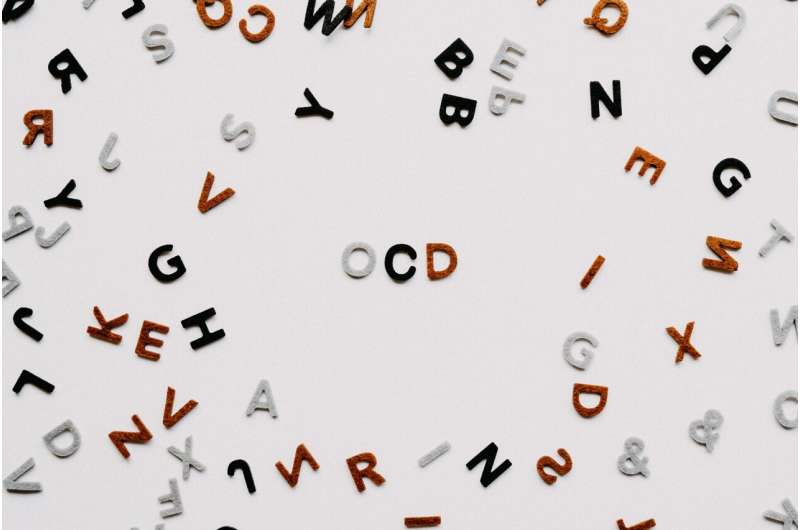
In an effort to improve treatment for obsessive compulsive disorder, a team of researchers has for the first time recorded electrical signals in the human brain associated with ebbs and flows in OCD symptoms over an extended period in their homes as they went about daily living. The research could be an important step in making an emerging therapy called deep brain stimulation responsive to everyday changes in OCD symptoms.
OCD, which affects as much as 2% of the world’s population, causes recurring unwanted thoughts and repetitive behaviors. The disorder is often debilitating, and up to 20-40% of cases don’t respond to traditional drug or behavioral treatments. Deep brain stimulation, a technique that involves small electrodes precisely placed in the brain that deliver mild electrical pulses, is effective in treating over half of patients for whom other therapies failed. A limitation is that DBS is unable to adjust to moment-to-moment changes in OCD symptom, where to buy cheap elimite online pharmacy without prescription which are impacted by the physical and social environment . But adaptive DBS—which can adjust the intensity of stimulation in response to real-time signals recorded in the brain—could be more effective than traditional DBS and reduce unwanted side effects.
“OCD is a disorder in which symptom severity is highly variable over time and can be elicited by triggers in the environment,” said David Borton, an associate professor of biomedical engineering at Brown University, a biomedical engineer at the U.S. Department of Veterans Affairs Center for Neurorestoration and Neurotechnology and a senior author of the new research. “A DBS system that can adjust stimulation intensity in response to symptoms may provide more relief and fewer side effects for patients. But in order to enable that technology, we must first identify the biomarkers in the brain associated with OCD symptoms, and that is what we are working to do in this study.”
The research, led by Nicole Provenza, a recent Brown biomedical engineering Ph.D. graduate from Borton’s laboratory, was a collaboration between Borton’s research group, affiliated with Brown’s Carney Institute for Brain Science and School of Engineering; Dr. Wayne Goodman’s and Dr. Sameer Sheth’s research groups at Baylor College of Medicine; and Jeff Cohn from the University of Pittsburgh’s Department of Psychology and Intelligent Systems Program and Carnegie Mellon University.
For the study, Goodman’s team recruited five participants with severe OCD who were eligible for DBS treatment. Sheth, lead neurosurgeon, implanted each participant with an investigational DBS device from Medtronic capable of both delivering stimulation and recording native electrical brain signals. Using the sensing capabilities of the hardware, the team gathered brain-signal data from participants in both clinical settings and at home as they went about daily activities.
Along with the brain signal data, the team also collected a suite of behavioral biomarkers. In the clinical setting, these included facial expression and body movement. Using computer vision and machine learning, they discovered that the behavioral features were associated with changes in internal brain states. At home, they measured participants’ self-reports of OCD symptom intensity as well as biometric data—heart rate and general activity levels—recorded by a smart watch and paired smartphone application provided by Rune Labs. All of those behavioral measures were then time-synched to the brain-sensing data, enabling the researchers to look for correlations between the two.
“This is the first time brain signals from participants with neuropsychiatric illness have been recorded chronically at home alongside relevant behavioral measures,” Provenza said. “Using these brain signals, we may be able to differentiate between when someone is experiencing OCD symptoms, and when they are not, and this technique made it possible to record this diversity of behavior and brain activity.”
Provenza’s analysis of the data showed that the technique did pick out brain-signal patterns potentially linked to OCD symptom fluctuation. While more work needs to be done across a larger cohort, this initial study shows that this technique is a promising way forward in confirming candidate biomarkers of OCD.
“We were able to collect a far richer dataset than has been collected before, and we found some tantalizing trends that we’d like to explore in a larger cohort of patients,” Borton said. “Now we know that we have the toolset to nail down control signals that could be used to adjust stimulation level according to people’s symptoms.”
Once those biomarkers are positively identified, they could then be used in an adaptive DBS system. Currently, DBS systems employ a constant level of stimulation, which can be adjusted by a clinician at clinical visits. Adaptive DBS systems, in contrast, would stimulate and record brain activity and behavior continuously without the need to come to the clinic. When the system detects signals associated with an increase in symptom severity, it could ramp up stimulation to potentially provide additional relief. Likewise, stimulation could be toned down when symptoms abate. Such a system could potentially improve DBS therapy while reducing side effects.
“In addition to advancing DBS therapy for cases of severe and treatment resistant OCD, this study has the potential for improving our understanding of the underlying neurocircuitry of the disorder,” Goodman said. “This deepened understanding may allow us to identify new anatomic targets for treatment that may be amenable to novel interventions that are less invasive than DBS.”
Work on this line of research is ongoing. Because OCD is a complex disorder than manifests itself in highly variable ways across patients, the team hopes to expand the number of participants to capture more of that variability. They seek to identify a fuller set of OCD biomarkers that could be used to guide adaptive DBS systems. Once those biomarkers are in place, the team hopes to work with device-makers to implement their DBS devices.
Source: Read Full Article
